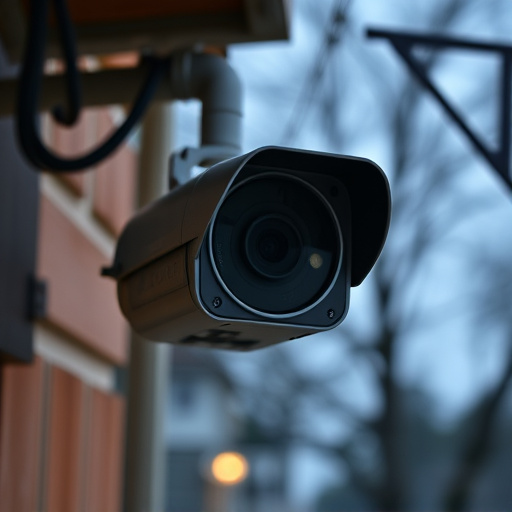Inspect everyday objects for unusual markings, check room perimeters and corners, stay vigilant during inspections to spot spy cameras in Airbnbs. Use advanced tools like thermal imaging cameras and software analysis, consider legal and ethical guidelines when installing security cameras, disclose hidden camera presence to avoid legal issues.
Uncover the art of spotting hidden security cameras with our comprehensive guide. Learn effective methods to identify spy cameras in various hideouts, from discreetly placed devices in Airbnb rentals to common locations around your home or office. We explore visual cues, advanced detection tools, and essential legal considerations for ethical use. Equip yourself with knowledge to ensure privacy and safety in today’s digital era.
- Understanding Spy Camera Common Hideouts
- Visual Checks: Identifying Discreet Cameras
- Advanced Tools for Detection
- Legal Considerations and Ethical Use
Understanding Spy Camera Common Hideouts
Understanding where spy cameras are commonly hidden is the first step in safeguarding your personal spaces, especially when renting properties like Airbnbs. These devices can be tiny and discreetly placed in various locations, making them hard to detect. Common hideouts include door handles, window frames, light switches, smoke detectors, mirrors, and even seemingly harmless decorative items.
When inspecting an Airbnb or any space, pay close attention to these areas. Look for any unusual markings or attachments on everyday objects. It’s also crucial to check the room’s perimeter, including corners and behind furniture, as these are favorite spots for hidden cameras. Staying vigilant and knowing what to look for can significantly reduce the risk of becoming a victim of surveillance.
Visual Checks: Identifying Discreet Cameras
Visual checks are a crucial first step in identifying discreet security cameras, especially when scrutinizing spaces like Airbnb properties. Start by examining every corner and crevice with a critical eye. Look for any unusual fixtures or attachments on walls, ceilings, or furniture that could house hidden lenses. Small, miniature cameras often blend into everyday objects like smoke detectors, light switches, or even faux rocks in fake plants.
Pay close attention to areas where privacy is naturally desired—for instance, behind mirrors, inside cabinets with narrow gaps, or beneath cloth-covered surfaces. With the rise of advanced technology, spotting these spy cameras requires a keen observer’s eye and a thorough understanding of how they can be hidden. Knowing what to look for is half the battle when it comes to ensuring your privacy in rented spaces.
Advanced Tools for Detection
In today’s digital era, spotting hidden security cameras has become an essential skill, especially for those who rent out spaces on platforms like Airbnb. “How to Spot Spy Cameras Airbnb” isn’t just a question but a necessary guide for ensuring privacy and security. Advanced tools have been developed to detect these clandestine devices, offering homeowners and renters peace of mind.
One effective method involves utilizing thermal imaging cameras, which can pinpoint heat signatures that aren’t visible to the naked eye. This technology is particularly useful in identifying hidden cameras, especially those disguised as everyday objects. Additionally, advanced software now exists that analyzes video feeds for suspicious patterns or anomalies, alerting users to potential spy cameras in real time. These tools empower individuals to take proactive measures and ensure their spaces remain secure and private.
Legal Considerations and Ethical Use
When installing security cameras, whether for personal or commercial use, it’s crucial to understand both legal considerations and ethical use guidelines. In many jurisdictions, there are strict regulations regarding privacy rights and the placement of surveillance equipment. For instance, in the US, the Fourth Amendment protects citizens from unreasonable searches and seizures, while various states have specific laws governing video surveillance. In Europe, the General Data Protection Regulation (GDPR) sets out rules for collecting and processing personal data, including images captured by cameras.
When it comes to using hidden or spy cameras, such as those strategically placed in rental properties like Airbnb, it’s essential to respect the law and privacy expectations of guests. While these cameras might be used to ensure property security and deter crime, they must be clearly disclosed to avoid legal issues. Transparency is key; inform guests that surveillance is in place and for what purpose. This ethical approach not only avoids potential legal pitfalls but also fosters trust between hosts and their Airbnb community.
In today’s digital era, understanding how to spot spy cameras is a vital skill, especially when renting or managing properties like Airbnbs. By familiarizing yourself with common hideouts, conducting visual checks, and utilizing advanced detection tools, you can ensure a safer environment. Always remember the legal and ethical implications of camera detection while prioritizing personal privacy. With these effective methods, you’re well-equipped to navigate potential security challenges and maintain peace of mind.
